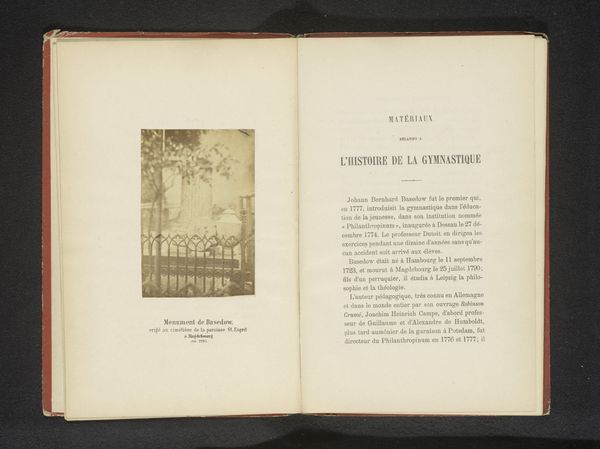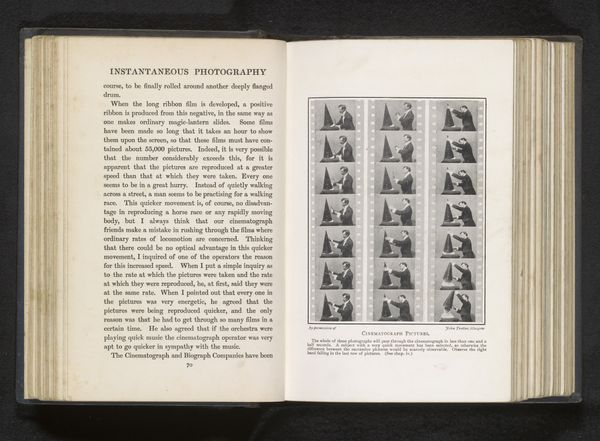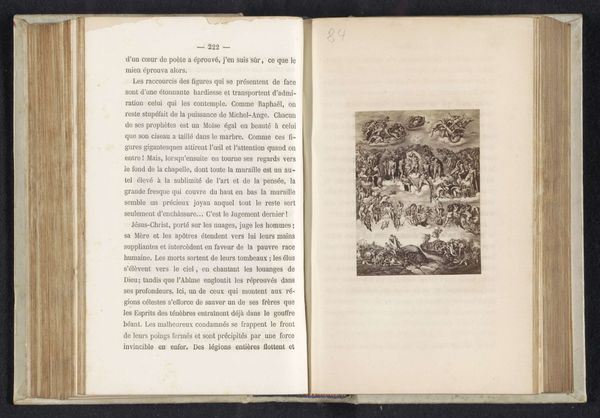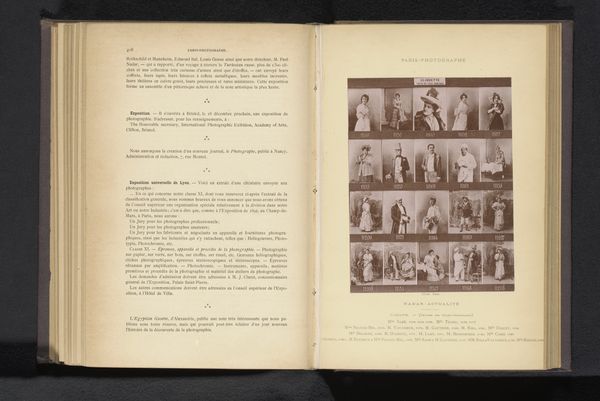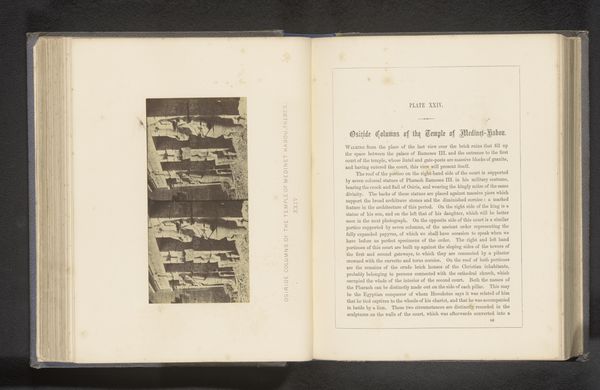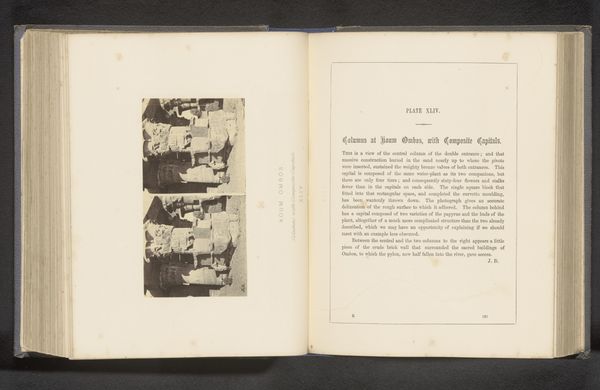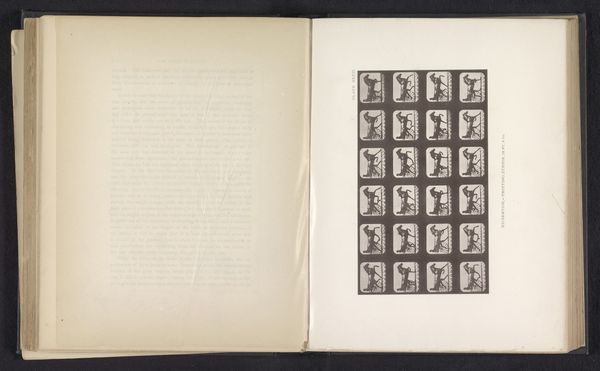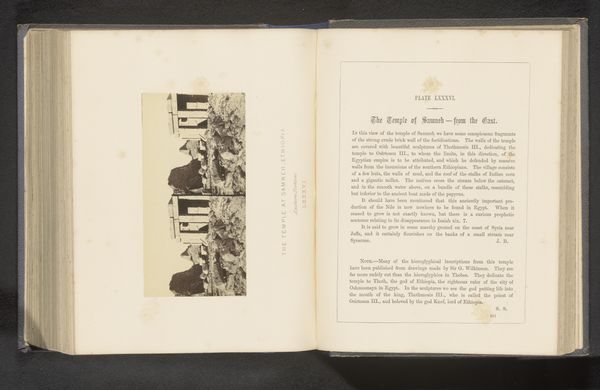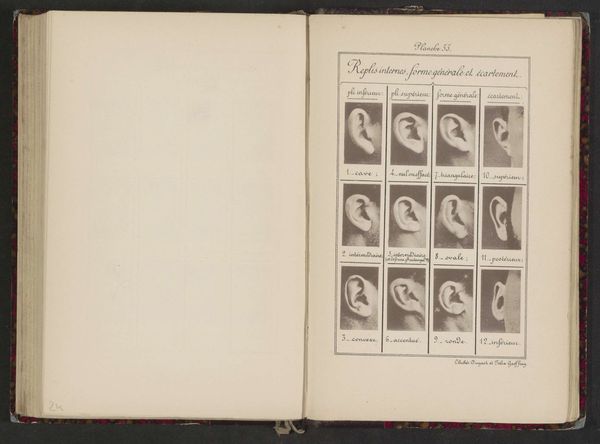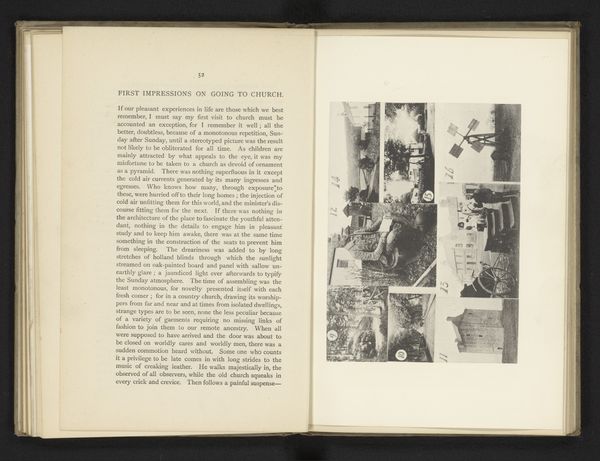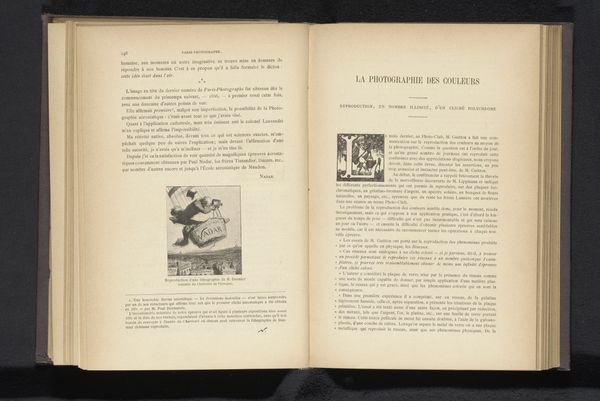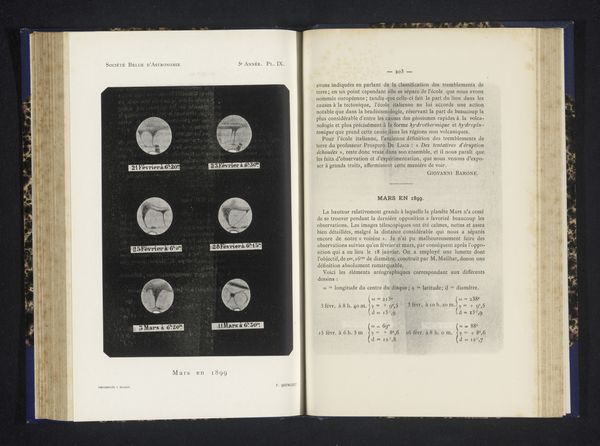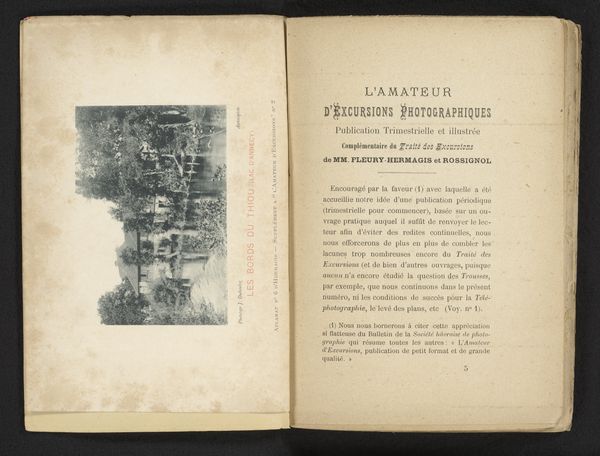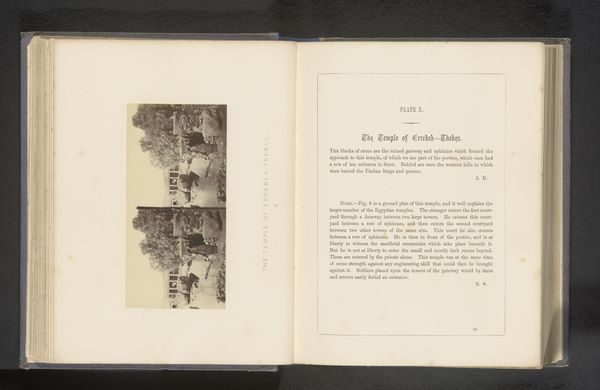
Dimensions: height 180 mm, width 272 mm
Copyright: Rijks Museum: Open Domain
Curator: This print by M.G. Demeny, believed to be from before 1891, offers a fascinating, early example of visualizing speech, titled "Sequentie van vormen van de mond bij het uitspreken van 'Je vous aime'." Editor: Oh, what a curious page. I immediately notice how the serialised, slightly blurred portraits almost resemble the frames of early animation—a visual whisper, if you will, of "I love you". Curator: Precisely. This photographic sequence aims to capture the mouth's changing shape when articulating that phrase. Think of it as an attempt to dissect and freeze-frame something ephemeral, like language and affection, using the relatively new science of photography. Editor: So, it’s about deconstructing the spoken word through visuals, making visible the normally invisible mechanisms of speech production. It uses the paper itself, the layout, as a sort of... a visual phonetics lab. I’m struck by the cold scientific method behind a declaration of love, like it’s a mechanical experiment not an expression of ardor. Curator: It is a curious juxtaposition, isn’t it? A formal, almost clinical approach to something inherently emotional. You see how Demeny meticulously isolates and documents these fleeting moments, removing much of the artistic "flourish". There's an unnerving charm here—of capturing a lover's expression, not in pigment, but photographic increments. Editor: The repetition itself feels telling. It’s like a mechanical ballet, performed by lips. And the paper—it's not just a surface, but also a material witness, showing age through its patina, as if carrying the secrets of those early experiments in speech. Curator: In the end, while it attempts a very specific form of scientific examination, what remains with us, perhaps unexpectedly, is an innovative experiment that allows one to contemplate the complexities and mechanics of not only language, but human relationships. Editor: Absolutely. This historical document not only shows us something concrete of the past but presents new ways of speaking, and reminds us that to really show love can be an active science.
Comments
No comments
Be the first to comment and join the conversation on the ultimate creative platform.
